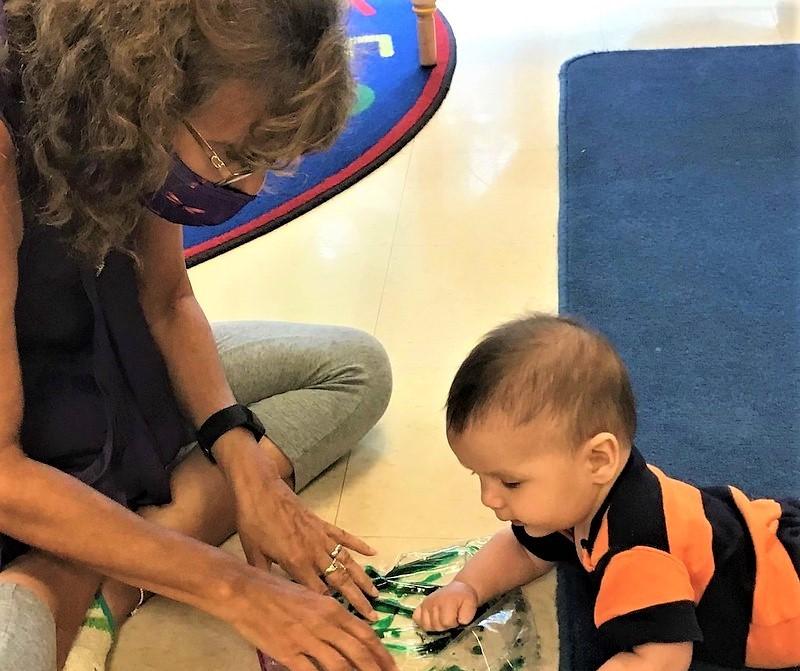Stress from inconsistent, unavailable, or unaffordable childcare amid the COVID-19 pandemic was associated with an 80% higher chance of burnout among US healthcare workers (HCWs), leading to anxiety, depression, and an intention to reduce work hours or leave the job, suggests a survey-based modeling study published yesterday in JAMA Network Open.
A University of Colorado researcher led the survey of 58,408 HCWs in 208 organizations employing more than 100 physicians from April to December 2020, a period characterized by dramatically increased work demands and widespread school and childcare closures.
Respondents included physicians (27%), nurses (20%), administrative staff (9%), and other roles (eg, pharmacist, physical therapist; 43%). Women made up 67.1% of participants, and White respondents made up 57.9%. Median organizational response rate was 32%. The final sample for burnout assessment was reduced by 38% because many organizations don't collect data on intent to reduce hours or quit .
Bigger issue for women, racial minorities
A total of 21% of respondents reported childcare stress (CCS). Racial minority participants and those of unidentified race reported CCS more often than White respondents (25.2% vs 18.8%). Likewise, women indicated more CCS than men (21.1% vs 17.9%; odds ratio [OR], 1.22).
Participants with CCS were at an 115% greater risk of anxiety or depression and 80% higher odds of burnout than those not reporting CCS.
Stress was especially common among nonbinary participants reporting CCS (33%; odds ratio [OR], 2.24) and those not indicating their gender identity (28%; OR, 1.76). Family medicine physicians and other specialists had similar prevalence of CCS (22% of 991 respondents), while allergists and dermatologists reported higher levels (30.8% of 45 and 31.2% of 78, respectively).
CSS was more often reported by medical assistants (336 respondents [26.9%]), nursing assistants (289 [25.4%]), speech therapists (44 [29.7%]), and pharmacists (202 [25.6%]) than among 3,571 physicians (23%). Compared with those in practice for 1 to 5 years, participants with 6 to 10 years and 11 to 15 years of experience were more likely to report CCS (ORs, 1.89 and 1.94, respectively).
Greater CCS was linked to a 91% higher likelihood of an intention to reduce hours and 28% higher odds of intention to leave the job, relative to low CCS. Among men, 39% with low CCS reported burnout, while 53% of those with high CCS did so (relative increase, 35%).
Among women, 49% with low CCS reported burnout, compared with 63% of those with high CCS, for a 28% increase. Among men with low CCS, 23% reported anxiety or depression, versus 43% of men with high CCS (relative increase, 86%), while for women, the figures were 33% and 50%, respectively, for a 51% increase. These proportions were comparable in the physician-only group.
Logistic regression analyses for all HCWs, controlling for years in practice, specialty, and role, revealed that women had about a 50% higher likelihood of reporting burnout than men (adjusted OR [aOR], 1.49).
Logistic regression analyses found that women had an 11% greater probability of saying they intended to reduce their work hours than men and that those with high CCS had a 91% greater likelihood of doing so than those with low CCS. When the model was restricted to physicians, those reporting CCS were 92% more likely to reduce their hours than those with low CCS.
HCWs reporting CCS were 28% more likely than those with low CCS to say they intended to leave their job. Women were 56% more likely than men to report anxiety and depression.
Workplace childcare may help
The researchers noted that the before-pandemic cost of full-time childcare for one infant for 1 year averaged $21,700, and that this figure is more than a quarter of a hospital nurse's average salary and more than two thirds of a nursing assistant's average salary. They added that many communities lack available childcare, including three of five rural areas and about 60% of areas with high proportions of Hispanic and Latino residents.
"Health care workers (HCWs) have the added difficulty of trying to find care outside typical hours such as nights and weekends, with only 8% of the center-based care providing nonstandard coverage," they wrote. "COVID-19 exacerbated many of these preexisting issues via school closures and day care centers losing nearly 70% of their daily attendance within 1 week in mid-March 2020."
Women, especially, bore the brunt of childcare, schooling, and housework amid the pandemic, the authors noted, increasing their already higher COVID-related odds of anxiety, depression, stress, and insomnia. "The combination of the extra duties and psychological stress affected female HCWs' professional advancement," they wrote. "Publications with women as first authors have declined since onset of the pandemic."
HCW burnout leads to medical errors, compromised patient care, and healthcare workforce turnover and attrition, with one in five HCWs quitting their jobs amid the pandemic, the researchers said. Costs related to burnout and poor mental health are estimated at $4.6 billion annually for physicians and $14 billion for nurses.
"Workplaces that can accommodate change on short notice, provide on-site care for ill children or on-site schools, and are aware of worker concerns about their children will be better positioned to show workers they are a caring environment, one that, we hope, workers would be more likely to remain with rather than leaving for shift work in other settings," they wrote.
In a JAMA interview that accompanies the study, first author Elizabeth Harry, MD, an internal medicine and physician wellbeing specialist at the University of Colorado, explained that she has an invested interest in the findings, as she has three young children and felt childcare stress during the pandemic with her physician husband. She emphasized the need to address the childcare needs of both male and female HCWs.
Regarding female doctors, she said, "We know that women physicians have great outcomes—we want them in the workforce." She said researchers need to explore ways to retain them and other HCWs, such as reducing hours and exploring job-sharing.






















